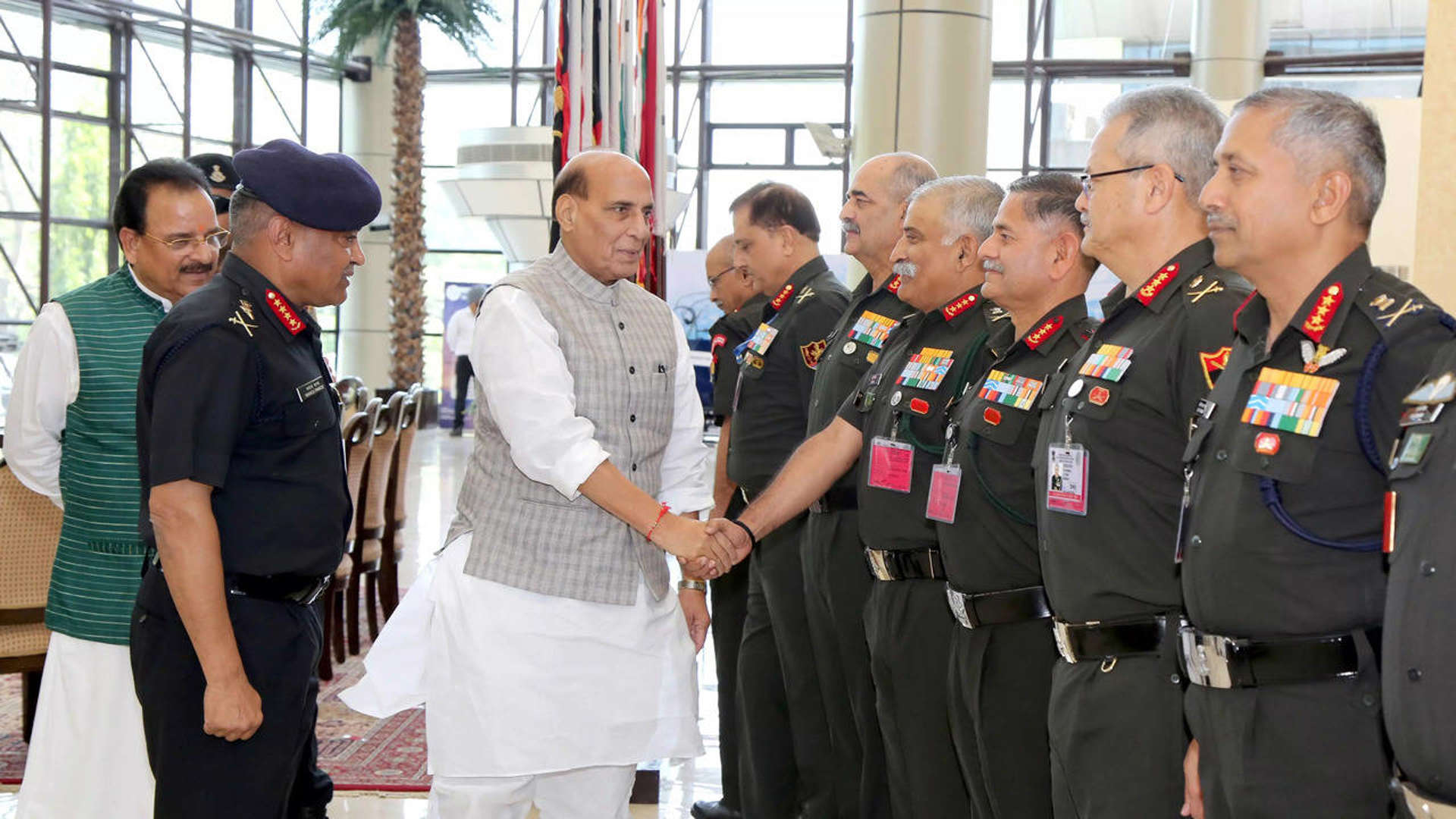On Wednesday, Defence Minister Rajnath Singh told the top leaders of the Indian Army to keep a close eye on the Line of Actual Control (LAC) with China because the situation in the northern sector was still “tense” because Chinese PLA troops were there.
In his speech at the Army Commanders’ Conference, Singh talked about the eastern Ladakh border standoff. He said that he had full faith in the Army to handle any situation, and he also said that talks for a peaceful end to the dispute would continue and that disengagement and de-escalation were the best way forward.
According to the defence ministry, Singh said that the government as a whole is working to make sure that the troops fighting to protect the country’s borders have the best weapons, tools, and clothing. These troops have to deal with harsh weather and hostile forces.
At some places of conflict in eastern Ladakh, Indian and Chinese troops have been fighting each other for three years, even though the two sides have finished pulling out of many areas after long diplomatic and military talks.
The defense minister said that the Indian Army is still one of the most trusted and exciting organizations in the country. This is something that the country’s more than a billion people believe.
“The situation is tense because PLA troops have been sent to the northern sector.” “Our armed forces, especially the Indian Army, will have to stay on guard all the time to keep the LAC safe,” he was quoted as saying by sources.
The defense minister said that the government’s “topmost priority” is to make sure that the country is safe.
In a release, the ministry said that Singh praised the Border Roads Organization and said that the group’s work had led to a huge improvement in road communication along the borders.
The Army Commanders’ Conference started on Monday and will last for five days. It is talking about India’s security problems along its borders with China and Pakistan, as well as ways to improve the fighting power of the force.
Chief of Defence Staff Gen. Anil Chauhan, Army Chief Gen. Manoj Pande, Navy Chief Admiral R Hari Kumar, and Air Chief Marshal VR Chaudhari also spoke to the leaders.
Singh said, “Unconventional and asymmetric warfare, including hybrid war, will be a part of future conventional wars.” He was talking about how the world’s politics work. “Cyber, information, contact, trade, and money have all become important parts of future wars that can’t be separated. This means that the Armed Forces will have to think about all of these things when making plans and strategies,” he said.
He praised the army’s reaction to cross-border terrorism and said that the enemy’s proxy war is still going on. He was talking about the situation along the Western borders.
“I applaud how well the Central Armed Police Forces and the army work together to deal with the threat of terrorism in Jammu and Kashmir,” he said.
Singh said, “The coordinated operations in the Union Territory of Jammu and Kashmir are helping to make the area more stable and peaceful, and this should continue. For this, I want to thank the Indian Army again.”
The defense minister praised the army for its high level of combat readiness and skills, which he said he always sees for himself when he goes to forward areas.
“Operations carried out by the Indian Army have also made a big difference in the security situation in the Northeastern states,” Singh said.
The defense minister said that real-time information needs to be used more effectively so that “we can be fully ready to face any such challenges in the future.” He liked that the army was working with private companies to create niche technologies.
He also said that the military should trust the country’s own businesses and technologies because they are the ones using them.
The defense minister praised the army for how it carried out the “Agniveer” plan.
He also looked at a show of equipment that focused on niche technology, innovation, solutions for surveillance, artificial intelligence, training, robotics, virtual reality, operational logistics, etc.
The second issue of the Indian Army UN Journal, called “Blue Helmet Odyssey: Changing Shapes of Peacekeeping Operations in the 20th Century,” was released by the minister of defense.
Air Chief Marshal Chaudhari talked about the IAF’s new doctrine and how the forces are working together in his speech.
The Chief of Naval Staff talked about threats to maritime security and how the three forces are working together more and more.
In his speech, Gen. Pande talked about how war is changing in the current geostrategic situation and how the Indian Army is changing to become a force that is ready for the future.
The Army Commanders’ Conference is an important event that takes place every year in April and October.
The Indian Army uses the meeting as an official place to talk about big ideas and make important policy decisions for the army.
